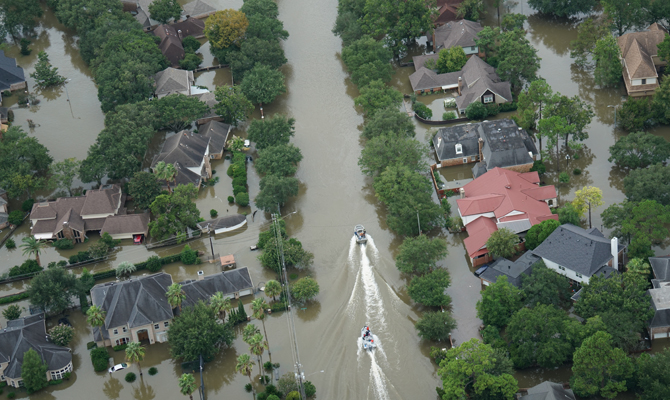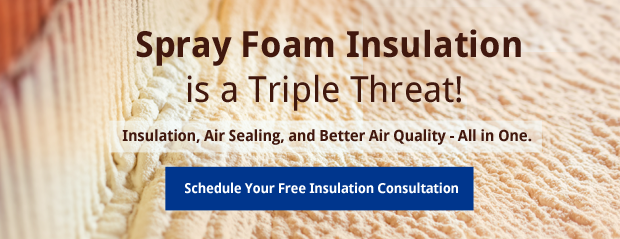
This past month, the most powerful hurricane the open Atlantic has ever seen cut a deadly path through the Caribbean and the southeast United States. Irma has left behind a legacy of destruction and fear; coming in at a Category 4, Hurricane Maria is bound to do the same. There is no doubt that storms intensity have been increasing steadily over the past 30 years. As ocean temperatures continue to elevate due to climate change, scientists don’t see any signs of these intense storm swells stopping.
In any emergency situation, the key is to not be afraid but to be ready. If you live on the East Coast, or even inland, it is vital to be prepared for the worst so that your house is set up for survival during these violent hurricanes. Here are some of the ways that you can be proactive and prepare yourself to ride out the next storm.
Hurricane Proofing Your Home with Spray Foam Insulation
If you live in a storm-prone part of the country, hurricane proofing your home with spray foam insulation is a smart investment. Traditional insulation, although effective for regulating your home temperature, is not created to protect against flooding. Traditional insulation material offers little to no protection against moisture and often times is not able to dry out after saturation. Wet insulation that is unable to dry out eventually has to be removed to prevent any likely mold growth.
Closed cell spray foam insulation is a flood-resistant material that can withstand direct contact with floodwater for an extended period (72 hours) of time. Unlike the spongy, flexible texture of open cell spray foam, when closed cell spray foam insulation is sprayed in, it quickly expands to fill any tiny gaps or crevices and becomes rigid.
This rigidity can be a key element in homes situated in a hurricane-prone area. This is due to the insulation’s ability to add structural integrity to roofs covering unvented attics, which can help prevent roof blow off, something which is all too common when the high winds of a hurricane are present and wind uplift is a concern. Get a free spray foam insulation consultation through Wattson Home Solutions to find out how you can save money, energy, and protect your largest investment, your home, from the wrath of mother nature.
Bonus DIY Tips for Florida Homeowners:
Starting with how you can better secure your roof, here are some bonus tips that can help Florida homeowners to prepare for extreme weather events.
Hit the Roof
Reinforcing your roof may seem over the top, but having your roof ripped off by a hurricane is one of the most dangerous hits a home can take. (It may even impact your houses ability to remain standing!) This explains why there are code-mandated construction regulations in place for fastening systems in many extreme weather areas. These regulations make reinforcing your roof a necessity, but for those of you who don’t live in one of these places we recommend that you act proactively.
There are a couple of options to choose from when it comes to securing your roof. Lateral anchors, tie-downs, and even premium flooring glue are all effective solutions that any homeowner could purchase at a local hardware store. Just make sure that whatever method you decide on is compatible with your home’s construction type. And– don’t forget– that spray foam insulation can help strengthen the structural integrity of your roof.
Hold the Door!
Checking the structural stability of your front door is an easy thing for any Florida homeowner to do. Start by identifying and replacing any weak hardware (like hinges and screws). If your door needs replacing, a lot of entryway door manufacturers offer storm-resistant models. Many of these manufacturers will even offer you a full replacement hardware should you need to replace any pieces over time.
Believe it or not, the most important door to secure is the door to your garage. According to the Federal Alliance for Safe Homes , storm wind entry through garage doors accounts for about 80 percent of all residential hurricane damage. If you are not able to replace your model with a storm-resistant version, you can always research ways to reinforce your garage door or purchase a retrofit kit to make the necessary adjustments.
Windows of Opportunity
Whether you prefer shutters or shatter-resistant glass, you want to make sure that your windows are prepared to withstand any flying debris. Shatter-resistant glass is expensive, but the overall investment may be worth it if you live in a hurricane-prone zone. If you decide to go the route of adding shutters, investing in permanent shutters is your best bet for optimal storm protection. If this isn’t an option for your home, that’s okay! There are plenty of permanent fastening hardware solutions on the market that can help you secure your shutters and windows.
The Whole Nine Yards
Hurricane-proofing your yard is an important step for the protection of your home. Be sure to check the trees in your area. Identify any leaning trees or broken limbs that are at risk of falling. Cracks in tree trunks, insect infestations and mushrooms growing on the bark (indicating decay) are all warning signs that you should be looking out for. Don’t forget about securing any loose items you have in your yard! Items like lawn furniture, grills, trash cans and potted plants should be brought inside. Any loose item, no matter how small, can get caught up in high storm winds and become a safety hazard.








